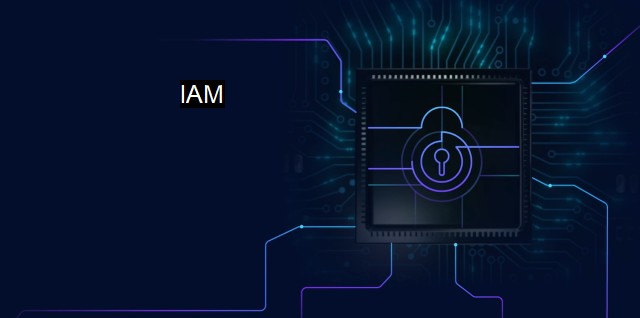What is IAM?
The Power of Identity and Access Management (IAM) in Ensuring Cybersecurity: Controlling Risks, Protecting Integrity of Computer Systems, and Regulating Information Access
"IAM" , an acronym for Identity and Access Management, refers to a crucial aspect of cybersecurity that assists businesses and organizations in ensuring the right individuals have the right access to resources and data at the right times and for the right reasons. This formalized security dimension is employed to authorise, identify and authenticate prospects.IAM as a cybersecurity practice emerged owing to the increased frequency and sophistication of cyber-attacks. The widespread migration of enterprises' operations to the digital arena also propagated its necessity. With numerous business and organizational processes hinging on digital platforms and enormous data volumes, it became imperative to exert stringent measures over who accesses such data and the extent to which they can handle the same. Thus, IAM was born.
IAM essentially brings order to the chaotic security domain by maintaining stringent control over user access within an organization. It involves the employment of technologies such as multi-factor authentication, password management tools, provisioning software, security-policy enforcement applications, and reporting tools. Strong IAM, then, is crucial as it reduces the likelihood of data breaches by ensuring that only authenticated users have access to the corporate network.
A crucial part of IAM strategy is the balance between functionality and security, meaning that a functional system incorporates secure inputs which ensure the users don’t misuse their credentials. components like access management, identity governance, and security must synergetically come together under an effective IAM strategy to mitigate the possibility of threats like identity theft and fraud.
The IAM framework consists of number of components: the first one is the identifier, a unique marker related to a user's identity like an email ID. This allows for the system to register a sort of 'fingerprint,' unique across the entire network. The next component, the authenticator, asserts the correctness of the identifier provided—it could be a password, a digital certificate, or a biometric input.
Another integral aspect of an IAM system is its policy-based access control. Access is controlled with predefined policies that stipulate ‘who’ can perform ‘what’ actions under ‘which’ conditions. Ownership of certain entitlements can be revoked or initiated as per the user’s role—seeing to it that access is limited to ‘need-to-know’ for ensuring least privilege and mitigating potential inside threats.
In the current digital age, organizations are also turning to utilize Identity-as-a-Service (IDaaS). IDaaS leverages cloud resources for identity and access management. The convenience and scalability enabled by cloud solutions for IAM strategies make IDaaS an increasingly popular choice.
IAM also magnifies the effectiveness of antivirus software. Such software screens, quarantines, and removes malware from a machine. Trojans and especially rootkits, which give hackers heightened, unauthorized access—might remain undetected without IAM to flag unusual access patterns or sources—the system then blocks these and limits damage.
Ironically, for the user, the benefits of IAM can be imperceptible—as effective IAM caters to an environment where authorized employees can access data and systems seamlessly, with no realization of the automated processes keeping them safe. For malicious entities IAM is a bane, locking them out and shielding critical assets.
IAM consistently ensures that knowledge is power kept in the right hands, decluttering the hyperlink maze and barring unauthorized entry. With increasing technologies, resources and data volumes triggering complex security demands, it will continue to be the key propeller in shielding organizations from cyber threats and maintaining their reputation. IAM is not just an addition to cybersecurity. It's a necessity.

IAM FAQs
What is Iam in cybersecurity?
Iam stands for Identity and Access Management. It refers to a set of processes, policies, and technologies used to manage digital identities and control access to systems and data in a secure and efficient manner.Why is Iam important in cybersecurity?
Iam is important in cybersecurity because it helps organizations to mitigate the risk of data breaches, cyber attacks, and unauthorized access to sensitive information. By implementing robust Iam solutions, organizations can ensure that only authorized users have access to the right data at the right time.What are the components of Iam in cybersecurity?
The components of Iam in cybersecurity include identity management, access management, authentication, authorization, and auditing. Identity management involves creating and managing user profiles, while access management refers to controlling access to resources. Authentication involves verifying the identity of users, while authorization determines what actions users are allowed to perform. Auditing involves tracking user activity and generating reports for compliance purposes.What is the role of antivirus software in Iam?
Antivirus software plays a vital role in Iam by protecting systems and data from malware, viruses, and other types of cyber threats. Antivirus software can scan files, emails, and websites for malicious code and prevent users from accessing potentially dangerous content. By integrating antivirus software with Iam solutions, organizations can enhance their overall cybersecurity posture and reduce the risk of data breaches and cyber attacks.| | A | | | B | | | C | | | D | | | E | | | F | | | G | | | H | | | I | | | J | | | K | | | L | | | M | |
| | N | | | O | | | P | | | Q | | | R | | | S | | | T | | | U | | | V | | | W | | | X | | | Y | | | Z | |
| | 1 | | | 2 | | | 3 | | | 4 | | | 7 | | | 8 | | |||||||